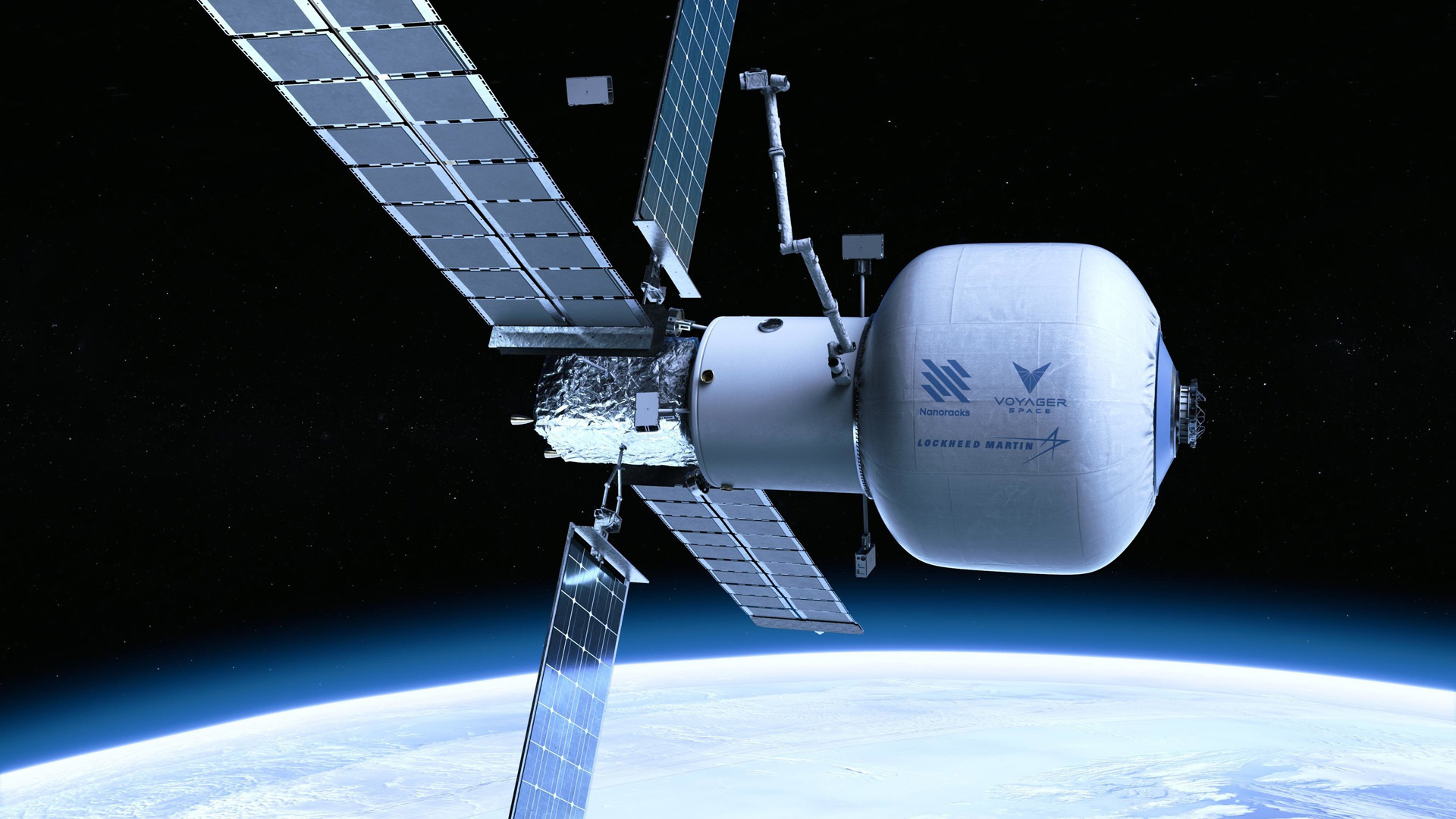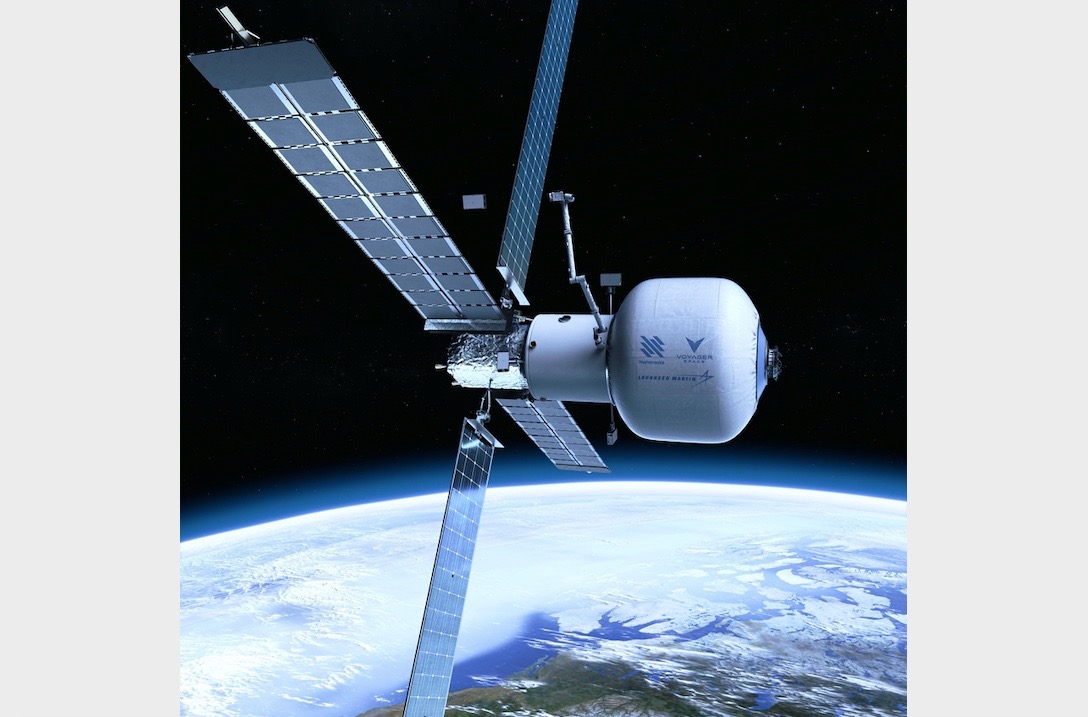
Earth orbit may be a hive of commercial activity a few years from now.
Nanoracks, Voyager Space and Lockheed Martin announced today (Oct. 21) that they plan to get a free-flying private space station up and running in low Earth orbit (LEO) by 2027. The outpost, called Starlab, is envisioned to be a tourist destination as well as a research and manufacturing hub that helps foster the growth of an off-Earth economy.
"To meet U.S. government, international space agency and commercial needs in space, these industry leaders will develop Starlab specifically to enable the growing space economy and meet pent-up customer demand for space services such as materials research, plant growth and astronaut activity," the three companies said in a press release.
Related: NASA wants to help private space stations get off the ground
The four-person Starlab station will be lofted in a single launch, which is expected to take place in 2027. The outpost will feature a habitat module with 12,000 cubic feet (340 cubic meters) of internal volume, a power and propulsion element, a laboratory setup and a large external robotic arm to service payloads and cargo, according to Nanoracks' Starlab page.
For comparison, the International Space Station (ISS) has 32,333 cubic feet (916 cubic meters) of internal volume, which is equivalent to that of a Boeing 747 jet.
Starlab will have some competition for customers, if all goes according to plan. For example, Axiom Space intends to launch one private module to the ISS in 2024 and three more by the end of 2027, representatives of the Houston-based company told Space.com via email. That quartet will be capable of separating from the larger mothership and operating as a free-flying commercial space station.
Get the Space.com Newsletter
Breaking space news, the latest updates on rocket launches, skywatching events and more!
Colorado-based Sierra Space is also developing plans for a private orbiting outpost, and Jeff Bezos' Blue Origin has expressed interest in doing so as well.

NASA wants such commercial stations to pick up the slack from the ISS, which is likely to be retired in the 2028-to-2030 timeframe. The venerable outpost, which has hosted rotating astronaut crews continuously since November 2000, is currently approved to operate through the end of 2024, but an extension is widely expected.
NASA has established a project called Commercial LEO Destinations (CLD) to help facilitate the transition. CLD will work via a two-stage strategy modeled on that employed by the agency's commercial cargo and commercial crew programs, which spurred the development of private ISS-visiting spacecraft such as SpaceX's Dragon capsule.
"In the first phase, NASA will pursue multiple funded Space Act Agreements for early concept development of commercial destinations," agency officials wrote in a CLD update earlier this year. "In the second phase, NASA intends to purchase destination services when such services become available for purchase."
Mike Wall is the author of "Out There" (Grand Central Publishing, 2018; illustrated by Karl Tate), a book about the search for alien life. Follow him on Twitter @michaeldwall. Follow us on Twitter @Spacedotcom or Facebook.
Join our Space Forums to keep talking space on the latest missions, night sky and more! And if you have a news tip, correction or comment, let us know at: community@space.com.

Michael Wall is a Senior Space Writer with Space.com and joined the team in 2010. He primarily covers exoplanets, spaceflight and military space, but has been known to dabble in the space art beat. His book about the search for alien life, "Out There," was published on Nov. 13, 2018. Before becoming a science writer, Michael worked as a herpetologist and wildlife biologist. He has a Ph.D. in evolutionary biology from the University of Sydney, Australia, a bachelor's degree from the University of Arizona, and a graduate certificate in science writing from the University of California, Santa Cruz. To find out what his latest project is, you can follow Michael on Twitter.
